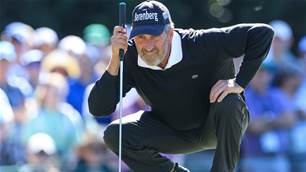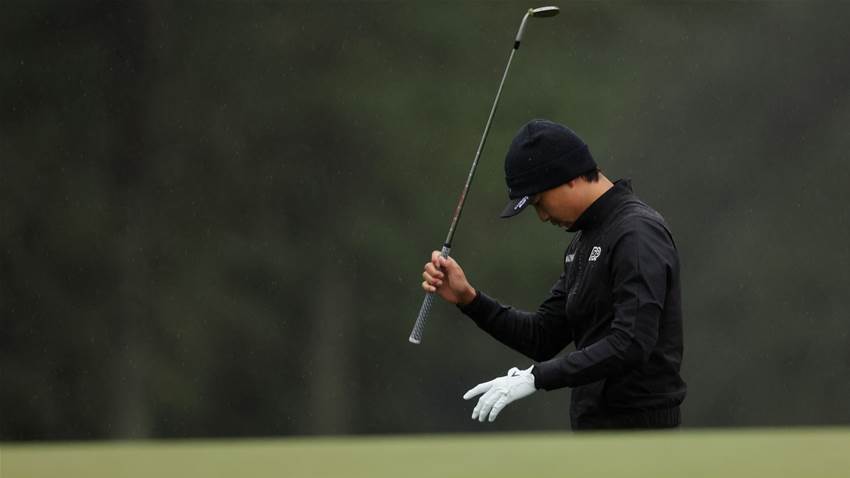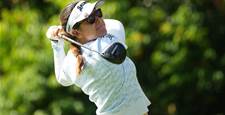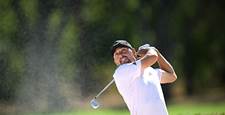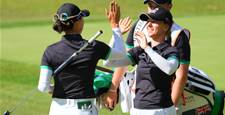“There is no present or future – only the past, happening over and over again – now.” – Eugene O’Neill
It’s a puzzlement really. But with just a single notable exception Australian frustration at Augusta National has consistently lived down to O’Neill’s deflating proclamation. Only once, when Adam Scott broke the nation’s duck in 2013, has a man from Down Under finished on top at the Masters Tournament. Otherwise, nine decades since the maiden “rite of Spring” took place have passed with only a curious mix of much mediocrity and occasional near-thing/heartbreak to commend them.
Then again, how many chances have Australians actually had to win the calendar year’s first major and don the famous green jacket? Asia-Pacific Amateur champion Jasper Stubbs will this week become the 54th wearer of the green and gold to tee-up for real at Augusta National. The first 53 have amassed 297 Masters appearances between them. Greg Norman with 23 has made the most starts, although Scott will equal that mark later this week. Bruce Crampton is next with 19, two more than Bruce Devlin.
Some impressive players then. But the fact remains that one victory out of almost 300 starts in 87 tournaments isn’t exactly a brilliant return.
Whatever, such futility remains a strange thing. A dozen Australian men have won a total of 18 major championships. And yes, only three (Peter Thomson, David Graham and Norman) have won more than one. But five (Thomson, Kel Nagle, Norman, Ian Baker-Finch and Cam Smith) have hoisted the iconic Claret Jug skyward as Open champions. Two (Graham and Geoff Ogilvy) have been U.S Open winners. And five (Jim Ferrier, Wayne Grady, Graham, Steve Elkington and Jason Day) have claimed the U.S PGA title. But Scott stands alone at the Masters.
It’s a perplexing fact. For one obvious thing, no course on the planet other than the Old Course at St. Andrews plays closer to the test offered at the Masters than Royal Melbourne. We’re talking strategy. So many of the myriad questions asked of the players at Augusta National are near-replicas of those posed by Australia’s best course.
At both, driving as close as possible to the hazards bequeaths the optimum angle into the flags. At both, the greens are firm and fast with 25 feet below the cup often preferable to five-feet above. At both, the penalties for missing in the “wrong” places are severe indeed. At both, architect Alister Mackenzie’s wide fairways, fast, big-breaking putts and preference for difficult chips and pitches played from “easy” lies on short grass are on display. None of which should be foreign to Australia’s elite performers.

Mentally then, Aussies should feel a level of Masters “course comfort” unfamiliar to at least a large section of their competition. They should always arrive in Georgia with something of an early advantage over most of their fellow competitors. But that perceived ascendency has not often seemed to help much. Too often, Aussies have come close to winning without actually doing so. Beyond Scott’s epic victory just over a decade ago a plethora of opportunities have been spurned.
As far back as 1950 Jim Ferrier gave up a three-shot advantage on the back-nine, shot 75 and lost out to Jimmy Demaret. In 1968 Devlin was the first man to break 70 in three of his four rounds – and not win. And let’s not delve too deeply into a few of Norman’s Aussie-record Masters appearances. This Scotsman is well aware of the various traumas the Shark put his compatriots through on multiple occasions, most notably in 1996 when a six-shot 54-hole lead was agonisingly transformed into a five-shot deficit by close of play.
Like most golf fans, I can still see it all clearly. There was the seemingly endless re-gripping of the club at address, twitches that first betrayed the ultimately destructive level of doubt in Norman’s mind.
 There was the dramatic run of dropped shots mid-round. The visit to Rae’s Creek on the short 12th and a second bout of “water torture” at the 16th (the result of what can only be described as an 18-handicap tee-shot) further piled on the pain before a final round of 78 was finally and mercifully over.
There was the dramatic run of dropped shots mid-round. The visit to Rae’s Creek on the short 12th and a second bout of “water torture” at the 16th (the result of what can only be described as an 18-handicap tee-shot) further piled on the pain before a final round of 78 was finally and mercifully over.
RIGHT: Greg Norman knows what Augusta heartbreak feels like. PHOTO: Getty Images.
But even before that epic collapse there were near things, at least statistically. Crampton and Jack Newton finished runners-up in 1972 and 1980 respectively, albeit it would be difficult to argue that the former could have beaten Jack Nicklaus or that the latter could have overhauled a distant Seve Ballesteros.
More recently, Charl Schwartzel finished with four inconvenient birdies in 2011 to beat Scott and Day by two shots. Ogilvy, too, was close that year. Smith was a distant runner-up in 2020 behind the rampant Dustin Johnson, then an equally non-challenging third two years later when this week’s favourite and World No. 1, Scottie Scheffler, won.
Amidst that catalogue of disappointment, it is hard to discern any noticeable common factors. Some have come up short as the victims of bad-timing and great play from others (Scott, Day). Luck of the not-good variety surely played a part in Norman’s play-off loss in 1987. No right-minded human could ever have predicted Larry Mize’s ridiculous chip-in from right of the 11th green. Throw in bad shots at bad times (most memorably to the 18th green in 1986 and 1989) and Norman’s propensity for losing multiplies. All, of course, are things Scott didn’t do - or have happen to him – en route to donning the green jacket.
Okay, are things about to change for the better? The heart may say otherwise, but this head has doubts. The amateur Stubbs is joined this week by only five professional compatriots – Cam Davis, Day, Min Woo Lee, Scott and Smith. Three of those have shown themselves capable of winning a major, which augurs well for their chances to at least contend. But on current form – and following unforgiving logic – it is hard to imagine any of them shooting a lower 72-hole score than Scheffler.
Davis: hasn’t yet shown himself ready to contend at the very highest level. Not quite,
Day: capable of contending but not quite the player he once was.
Lee: the Aussie who might prove me wrong. His very best golf could be good enough.
Scott: his best golf is no longer great, merely very good.
Smith: the move to LIV has shown only that his play has steadily regressed from its Open-winning peak.
So it is that any Aussie beating a Masters field that will contain – through the addition of Smith’s fellow LIV players - just about anyone and everyone capable of finishing first is something of a long shot.
A harsh assessment perhaps. But certainly one that is fair and easily justified. Then again, we are talking golf here. Anything can happen. Sometimes that heart v head battle produces an unexpected result. Who would have thought the careers of Tom Weiskopf and Ernie Els (both owned games seemingly perfectly suited to Augusta National) would conclude without either man owning at least one green jacket? Or that lesser lights like Mike Weir and Trevor Immelman would end up with seats at the annual champions dinner?
So let’s hope good old Eugene’s deep thinking finally turns out to be shallow. Or that my own reasoning is flawed. As Scott loudly proclaimed immediately after making the winning and history-making putt back in 2013: “Go Aussie.”
Related Articles

Huggan: The old boys speak
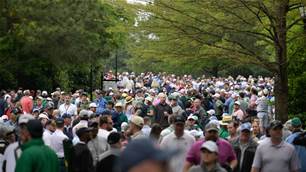
Huggan: Before too long, Augusta’s mildly amusing rules gravitate to irritating
